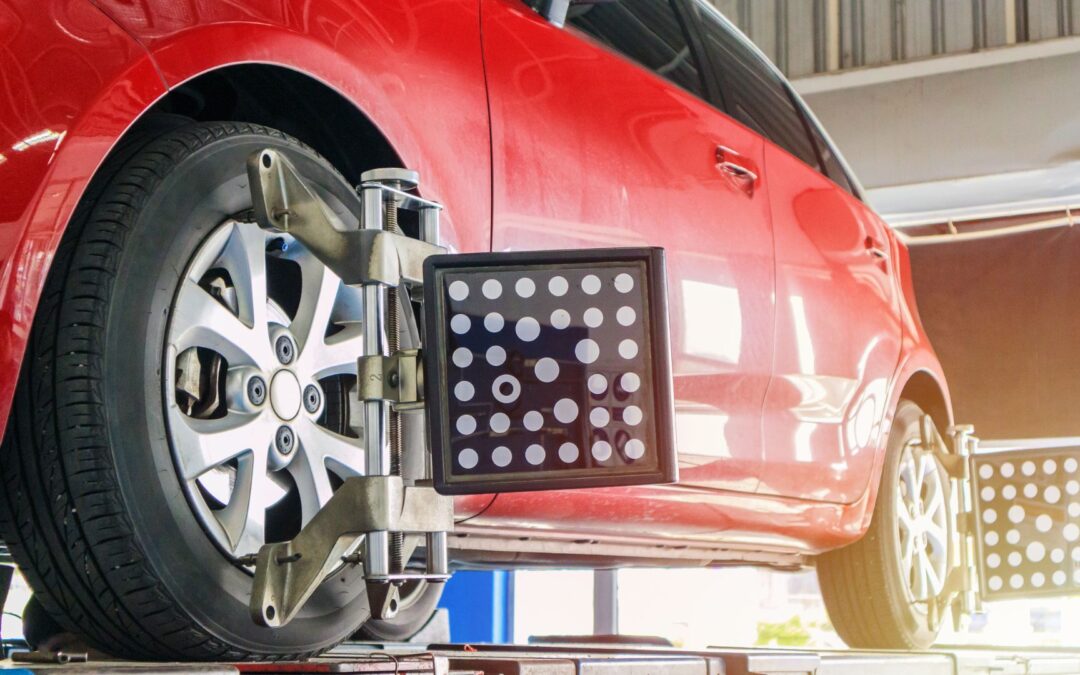What Is Wheel Alignment?
Wheel alignment is a process that ensures your car’s wheels are set to the optimum position as specified by the manufacturer. This adjustment impacts several key aspects of your vehicle, including handling, tire wear, and fuel efficiency. A proper alignment can significantly improve your car’s performance and prolong the life of its components.
Benefits of Wheel Alignment
1. Enhanced Fuel Efficiency
One of the most significant advantages of maintaining proper wheel alignment is improved fuel efficiency. Misaligned wheels can lead to uneven tire wear, which causes your vehicle to require more energy to move forward. When tires are not aligned correctly, they create additional friction, making the engine work harder and ultimately increasing fuel consumption. By ensuring your wheels are correctly aligned, you can enjoy better gas mileage and reduced fuel costs.
2. Improved Handling and Control
A well-aligned vehicle provides better handling and control on the road. When your wheels are misaligned, you may experience steering wheel vibrations or feel your car pulling to one side. This can create an uncomfortable and potentially dangerous driving experience, particularly at higher speeds. Proper alignment enhances steering precision, making your drive smoother and more enjoyable.
3. Extended Tire Life
Misaligned wheels are notorious for causing premature and uneven tire wear. When the toe, camber, or caster angles are off, it can result in faster deterioration of your tires, necessitating frequent replacements. On the other hand, a vehicle with properly aligned wheels promotes even tire wear, allowing you to get the most mileage out of your tires and saving you money in the long run.
4. Maximized Vehicle Performance
Every driver desires optimal vehicle performance. When your wheels are misaligned, it can disrupt the entire balance of your vehicle, affecting its acceleration, braking, and handling capabilities. Proper alignment ensures that all components of your vehicle work harmoniously, leading to improved performance on the road. A well-aligned car not only responds better but also delivers a smoother driving experience.
5. Increased Safety on the Road
Safety is a paramount concern for all drivers. Misaligned wheels can have serious safety implications, such as uneven tire wear that may lead to blowouts or tire failure. Furthermore, poor handling due to misalignment increases the risk of accidents. By ensuring proper wheel alignment, you promote even tire wear and enhance your vehicle’s handling characteristics, making it safer for both you and your passengers.
6. Cost Savings on Repairs
Investing in regular wheel alignment checks can help you avoid costly repairs down the line. A vehicle represents a significant financial investment, and proper maintenance is key to prolonging its lifespan. Misalignment can lead to a range of problems affecting essential components of your vehicle. By regularly checking your alignment, you can prevent these issues, ultimately saving money on repairs and extending the life of your car.
7. Enhanced Driving Comfort
A vehicle with properly aligned wheels provides a more comfortable driving experience. Misalignment can result in vibrations, uneven tire wear, and a host of other issues that make driving less enjoyable. By ensuring your wheels are aligned, you eliminate these discomforts, allowing you and your passengers to enjoy a smoother ride, even on long journeys.
How to Know When Your Wheels Need Alignment
While regular maintenance is essential, there are several signs that may indicate your wheels need alignment:
- Steering Wheel Off-Center: If your steering wheel is not centered when driving straight, it’s a sign of misalignment.
- Vehicle Pulling: If your vehicle tends to pull to one side while driving, alignment may be off.
- Uneven Tire Wear: Inspect your tires for irregular wear patterns. If the wear is uneven, it could indicate misalignment.
- Vibrations: If you feel vibrations in the steering wheel while driving, this can also signal alignment issues.
The Wheel Alignment Process at All Around Auto Repair
At All Around Auto Repair, we have the expertise and equipment necessary to perform precise wheel alignment services. Our state-of-the-art alignment rack allows us to check and adjust the alignment of your automobile or truck efficiently. Our experienced technicians will inspect your vehicle’s suspension system and make any necessary adjustments to ensure your wheels are properly aligned.
Conclusion
In conclusion, automobile wheel alignment is a vital component of vehicle maintenance that should not be overlooked. The benefits of proper alignment include improved fuel efficiency, enhanced handling, longer tire lifespan, better overall performance, increased safety, and cost savings on repairs. Additionally, regular alignment checks can lead to a more comfortable driving experience.
If you’re in Santa Rosa, CA, or the surrounding area, don’t hesitate to reach out to us at All Around Auto Repair for a comprehensive wheel alignment check. Keeping your vehicle in top condition ensures that you can enjoy every ride with confidence and peace of mind. Contact us today to schedule your wheel alignment service and experience the difference it can make for your car!
Frequently Asked Questions
1. How does wheel alignment affect fuel efficiency?
Misaligned wheels can increase rolling resistance, causing the engine to work harder and consume more fuel. Proper alignment ensures that tires roll smoothly, enhancing fuel efficiency. According to the U.S. Department of Energy, fixing alignment issues can improve gas mileage by up to 10%.
2. Can misaligned wheels cause steering wheel vibrations?
Yes, misalignment can lead to uneven tire wear, resulting in vibrations felt through the steering wheel. Addressing alignment issues can eliminate these vibrations and provide a smoother ride.
3. How often should wheel alignment be checked?
It’s advisable to have your wheel alignment inspected annually or every 10,000 miles, whichever comes first. However, if you frequently drive on rough roads or notice handling issues, more frequent checks may be necessary.

4. What are the consequences of neglecting wheel alignment?
Ignoring alignment can lead to uneven tire wear, reduced fuel efficiency, and compromised handling. Over time, this neglect can result in costly repairs and decreased vehicle safety.
5. Does wheel alignment impact tire lifespan?
Absolutely. Proper alignment ensures even tire wear, extending the lifespan of your tires. Misalignment can cause premature tire wear, necessitating earlier replacements.
6. Can wheel alignment affect braking performance?
Yes, misaligned wheels can cause the vehicle to pull to one side during braking, compromising stopping distance and safety. Proper alignment ensures balanced braking performance.
7. Is wheel alignment necessary after installing new tires?
Yes, aligning your wheels after installing new tires ensures they wear evenly and perform optimally, maximizing their lifespan and your investment.
8. How does wheel alignment influence vehicle handling?
Proper alignment ensures that all four wheels are pointing in the correct direction, enhancing steering response and vehicle stability, especially during cornering.
9. Can hitting a pothole affect wheel alignment?
Yes, impacts from potholes or curbs can knock wheels out of alignment. If you experience such an impact, it’s wise to have your alignment checked to prevent potential issues.
10. What is the difference between wheel alignment and wheel balancing?
Wheel alignment adjusts the angles of the wheels to the manufacturer’s specifications, ensuring they are parallel and perpendicular to the ground. Wheel balancing corrects the distribution of weight around the tire and wheel assembly, preventing vibrations.






